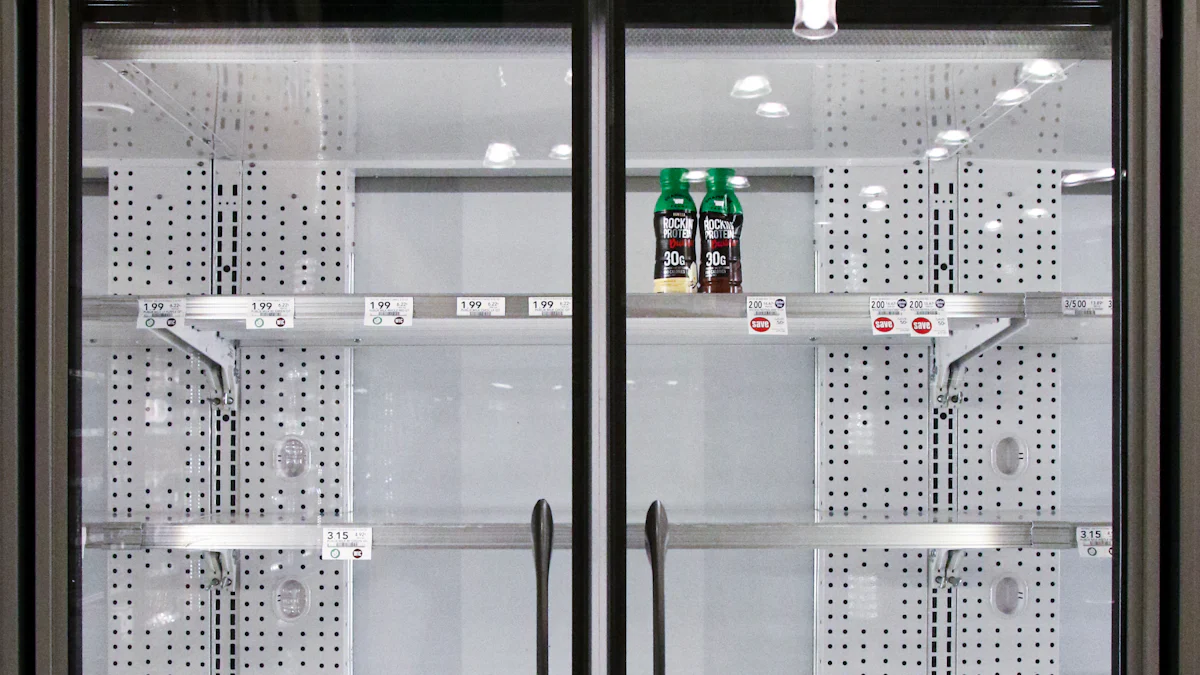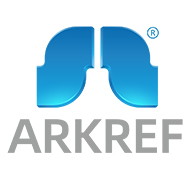Comparison of Spiral Freezer Features and Efficiency

Spiral freezers play a vital role in the food processing industry. They rapidly lower the temperature of food products, which minimizes ice crystal formation. This ensures that texture, flavor, and nutritional content remain intact. By maintaining a stable freezing environment, spiral freezers prevent freezer burn and preserve product quality. You can also benefit from their energy-efficient designs, which reduce operational costs over time.
The demand for spiral freezers continues to grow. For instance, the spiral freezer market is projected to reach $8.92 billion by 2033, with a compound annual growth rate (CAGR) of 7.5% from 2024. This growth reflects the increasing need for efficient freezing solutions in industrial food production. As a decision-maker, understanding these trends can help you choose the right equipment for your operations.
Key Features Comparison

Freezing Time Controls
Spiral freezers offer adjustable freezing times to meet the unique requirements of different frozen food products. You can modify the freezing duration based on the size, type, and moisture content of the product. For example, the GEA ProEdge Drive Series provides precise control over freezing time, ensuring optimal results for a wide range of applications. Similarly, the JBT GC70 model allows you to customize freezing parameters, making it suitable for diverse production needs. These features help you maintain product quality while improving operational efficiency.
Airflow Systems
Efficient airflow systems play a crucial role in the performance of spiral freezers. They ensure uniform airflow, which leads to consistent freezing across all products. Advanced designs, such as Square Technology's GYRoCOMPACT 60, enhance airflow efficiency and reduce energy consumption.
Faster freezing times improve production speed.
Reduced product dehydration preserves food quality.
Higher-quality frozen food products minimize inventory waste and open new business opportunities.
By investing in a spiral freezer with a robust airflow system, you can achieve better results and reduce operational costs.
Cleaning Mechanisms
Maintaining hygiene is critical in the food processing industry. Automated cleaning systems in spiral freezers simplify this process and ensure efficiency. These systems reduce contamination risks and eliminate the need for manual labor, providing consistent cleaning results. For instance, the Advanced Equipment Inc.'s IQF Spiral Freezer includes features like a Manual Control Center Drum Clean Place Spraying Nozzle and a Belt Washer/Dryer and Pump System. These features make cleaning easier compared to other models.
Additionally, many spiral freezers come with spacious access points and optional CIP (clean-in-place) systems. These designs minimize dirt traps and improve cleaning efficiency. Modular designs also allow for easier maintenance, giving you a significant advantage over traditional freezers. By choosing a spiral freezer with advanced cleaning mechanisms, you can maintain high hygiene standards while reducing downtime.
Efficiency Analysis

Energy Consumption
Energy efficiency is a critical factor when selecting a spiral freezer. Energy-efficient models, like Square Technology's GYRoCOMPACT 60, consume less power compared to traditional freezers. This not only reduces operational costs but also minimizes environmental impact.
Feature | Traditional Spiral Freezers | Energy-Efficient Spiral Freezers |
|---|---|---|
Higher | Lower | |
Environmental Impact | Greater | Reduced |
Air Circulation Efficiency | Standard | Optimized |
You can achieve energy savings of 30% to 50% or more by managing the freezing process effectively. Features like Variable Speed Drives (VSDs) for fans and optimized airflow management ensure uniform temperature distribution, reducing energy wastage. Additionally, these freezers minimize heat transfer to the surrounding environment, further lowering energy consumption.
Defrosting Systems
Defrosting mechanisms play a vital role in maintaining the efficiency of spiral freezers. Common methods include:
Air defrosting: Uses pressurized air to remove ice from coils, making it the most widely used technique.
Spiral immersion systems: Employ water or brine for faster cooling, significantly reducing energy costs.
Innovative models, like the JBT GC70, incorporate advanced defrosting technology to reduce defrosting time. This ensures uninterrupted operations and enhances overall productivity.
Operational Reliability
Reliable performance is essential for minimizing downtime in the food processing industry. Advanced monitoring and control systems in spiral freezers improve fault detection and product quality. Efficient airflow configurations also contribute to faster freezing times, reducing inventory waste.
Long-term performance depends on factors like operational efficiency, technological advancements, and proper maintenance. Models like KORUTEK's Compact Spiral Series excel in these areas, offering consistent performance and durability. By investing in a reliable spiral freezer, you can ensure smooth operations and maintain high standards in cold chain logistics.
Compliance and Standards
Certifications
Certifications play a vital role in the spiral freezer market. They ensure that the equipment meets stringent food safety and quality standards. For example, USDA approval guarantees compliance with hygiene and operational requirements in food processing. CE certification ensures adherence to European Union safety and quality benchmarks. These certifications not only validate the performance of spiral freezers but also protect consumer health.
Certification Type | Description |
|---|---|
USDA | Ensures compliance with United States Department of Agriculture standards. |
CE Certification | Guarantees conformity with European Union safety and quality regulations. |
Compliance with industry standards is critical for spiral freezers. It ensures food safety and regulatory adherence, which are essential in the food sector. Manufacturers design these freezers to meet rigorous hygiene and safety requirements. Features like smooth surfaces, easy-to-clean components, and automated cleaning systems promote compliance. By choosing certified equipment, you can maintain high standards in your operations and build trust with customers.
Adherence to North American Standards
In North America, spiral freezers must comply with specific regulations to operate in the food industry. These regulations include certifications from organizations like the USDA, UL, and CFIA. Each certification addresses a unique aspect of safety and quality. For instance, UL certification focuses on electrical safety, while CFIA ensures compliance with Canadian food inspection standards.
Certification | Description |
|---|---|
USDA | United States Department of Agriculture |
UL | Underwriters Laboratories |
CFIA | Canadian Food Inspection Agency |
CSA | Canadian Standards Association |
OSHA | Occupational Safety and Health Administration |
Brands like FPS Food Process Solutions excel in meeting these standards. They design spiral freezers with features that align with North American regulations. These include robust materials, advanced cleaning systems, and energy-efficient designs. By investing in compliant equipment, you can ensure smooth operations and maintain your position in the competitive spiral freezer market. This also supports your role in cold chain logistics by delivering safe, high-quality frozen products.
Warranty and Durability
Warranty Coverage
When purchasing a spiral freezer, understanding the warranty coverage is essential. Top brands offer warranties that vary in length and scope depending on the component. For example, aluminum coils typically come with a 2-year warranty, while stainless steel or galvanized components are covered for up to 5 years. Belting, on the other hand, often has a shorter warranty of 1 year.
Component | Warranty Coverage |
|---|---|
Aluminum Coil | 2 years |
Stainless Steel/Galvanized | 5 years |
Steel Coil | Defective materials and workmanship |
Belting | 1 year |
You should also examine the exclusions in warranty terms. Many warranties exclude damages caused by abuse, accidents, or improper operation. For instance, evaporators and enclosures often have exclusions for misuse or incorrect cleaning procedures.
Component | Warranty Duration | Exclusions |
|---|---|---|
Evaporator | 2 years | Abuse, accident, incorrect operation |
Enclosure | 5 years | Abuse, accident, incorrect operation |
Belting | 1 year | Abuse, accident, incorrect operation, cleaning procedure |
By reviewing these details, you can ensure the warranty aligns with your operational needs and protects your investment.
Materials and Build Quality
The durability of a spiral freezer depends heavily on the materials used in its construction. Manufacturers often use stainless steel for components like spiral belting and mesh belts due to its resistance to corrosion and wear. For evaporator coils, aluminum fins and tubing are common, offering excellent thermal conductivity.
Component | Material Used |
|---|---|
Spiral Belting | |
Evaporator Coil | All-aluminum fins and tubing |
Mesh Belt | |
Insulation Board | Stainless steel and polyurethane foam |
Additionally, insulated panels often feature PIR foam with stainless steel cladding, ensuring robust thermal insulation. These materials withstand the harsh conditions of food processing equipment, making them ideal for industrial environments.
Long-Term Reliability
To maximize the lifespan of your spiral freezer, regular maintenance is crucial. Cleaning the refrigeration system prevents ice buildup and ensures efficient heat transfer. Inspect conveyor belts and moving parts frequently to identify wear and tear. Lubricating these components reduces friction, which helps maintain operational efficiency.
Maintenance Practice | Description |
|---|---|
Cleaning Procedures | Regular cleaning of both exterior and interior. |
Lubrication | Lubricate conveyor systems and moving parts. |
Inspections | Regular checks of electrical systems and components. |
These practices not only extend the life of your freezer but also improve its performance. A well-maintained spiral freezer ensures uniform freezing, reduces downtime, and supports cold chain logistics by maintaining product quality.
Optional Features
Programmable Systems
Programmable systems in spiral freezers allow you to customize freezing programs based on your specific production needs. These systems let you adjust parameters like belt speed, temperature, and airflow to match the requirements of different frozen food products. For example, Advanced Equipment Inc.'s IQF Spiral Freezer integrates programmable controls that simplify operations and improve precision. This feature ensures consistent freezing quality, even when handling diverse product types.
Integration with production lines is another advantage of programmable systems. Modern spiral freezers can seamlessly connect with upstream and downstream equipment, creating a fully automated workflow. This reduces manual intervention, enhances productivity, and minimizes errors. By choosing a spiral freezer with programmable systems, you can optimize your production process and maintain high-quality standards.
Advanced Defrosting Mechanisms
Innovations in defrosting technology have significantly improved the efficiency of spiral freezers. Advanced mechanisms like FLoFREEZE® IQF extend the time between defrost cycles by up to a week, enabling continuous operation. Air Defrosters (ADF) use pressurized air blasts to remove frost quickly, doubling or tripling run times. Sequential Defrost (SD) systems feature separate chambers with dedicated fans and evaporators, allowing uninterrupted freezing while limiting water usage.
Innovation Type | Description | Benefits |
|---|---|---|
FLoFREEZE® IQF | Extends the period between defrosts by up to a week, allowing continuous operation. | Run freezer production 24/7. |
Air Defroster (ADF) | Sends a quick blast of pressurized air to remove frost, effectively doubling or tripling run times. | Increases operational efficiency and reduces downtime. |
Sequential Defrost (SD) | Features separate chambers with dedicated fans and evaporators for continuous operation. | Limits stops for defrosting, increases volumes and throughput, and reduces water usage. |
These innovations reduce downtime and improve operational efficiency. For instance, the JBT GC70 model incorporates advanced defrosting technology, ensuring faster defrost cycles and uninterrupted production. By investing in a spiral freezer with cutting-edge defrosting mechanisms, you can maximize productivity and minimize disruptions.
Additional Customizations
Tailored designs in spiral freezers help meet unique production requirements. Manufacturers like AFE offer custom-built models that adapt to your facility’s size and layout. You can choose adjustments in size, shape, and refrigeration methods to align with your specific needs. Additional options include adjustable belt speeds, variable temperature control, and airflow customization.
Variable temperature control
Airflow customization
Size and design flexibility
Additional features and accessories
Scalable designs also support growing businesses. Self-stacking spiral freezers, for example, enhance operational efficiency while reducing energy costs and waste. These designs maintain product quality, even as production volumes increase. Modern spiral freezers often integrate IoT and AI technologies, improving efficiency and reducing downtime. Automation and smart features make these freezers ideal for expanding food processing facilities. By selecting a scalable spiral freezer, you can future-proof your operations and meet rising demand effectively.
Understanding spiral freezer features and efficiency helps you make informed decisions for your operations. These freezers offer faster, uniform freezing with compact designs that save space. They maintain product quality by preventing large ice crystals and reducing downtime through continuous processes. Energy-efficient designs lower operational costs while ensuring optimal airflow for consistent freezing.
To select the best spiral freezer, evaluate your production capacity, product size, and freezing requirements. Consider belt width, turn radius, and airflow efficiency. Matching these factors to your industrial needs ensures you maximize productivity and maintain high-quality standards.
See Also
Comparing Efficiency And Costs Of Spiral And Tunnel Freezers
Understanding The Key Differences Between Spiral And Tunnel Freezers
How Spiral Freezers Drive Innovation In The Industry

